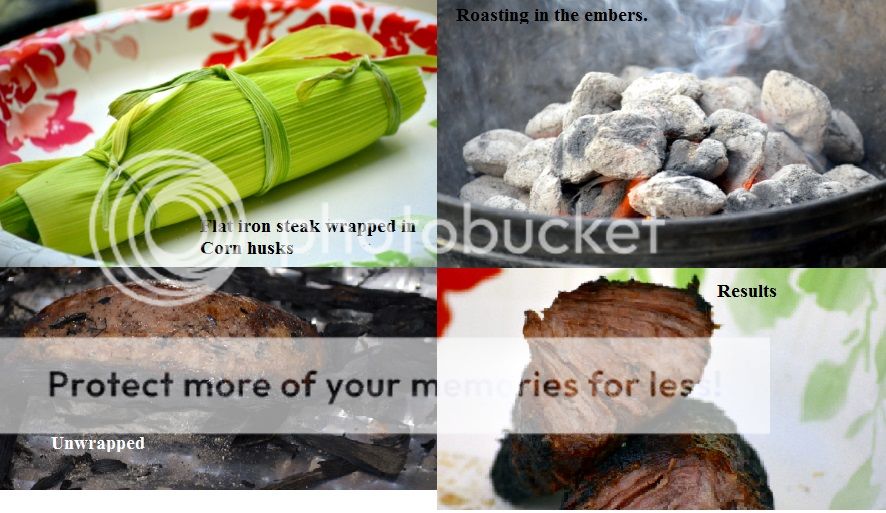Boshizzle
somebody shut me the fark up.
Here is something I tried based upon a 17th century account of how Virginia Indians (that's what we prefer to be called rather than native Americans) cooked venison. In the 17th century a clergyman by the name of John Clayton wrote about Virginia Indian cookery that they cook "venison barbecuted, that is, wrapped up in leaves, and roasted in the Embers." I started another thread on the subject that can be found here - http://www.bbq-brethren.com/forum/showthread.php?t=197187 .
So. I thought I'd try my hand at it. This experiment is just a proof of concept. No conclusions can be drawn except that it's possible too cook meat wrapped in leaves roasted in embers and still be tasty.
Here are the results. I used a slice of flat iron steak rather than venison. I wrapped it in the only leaves that I know of that are big enough to wrap meat in. I also know from other accounts that Virginia Indians used corn husks to wrap food in as it cooked.

I let it "roast" in the embers for 15 minutes. I had no idea how long it would take, so I just chose 15 minutes. After about 5 minutes the wrapped meat started to hiss. This kept up until the outer corn husks began to flare up. At the 15 minute mark, I removed the wrapped meat from the embers, removed the corn husks and found a juicy steak. It was well done. So, obviously, for medium rare, 15 minutes was too long. But, the meat was still juicy. The corn husks on the bottom of the meat charred which added a nice crunch to the outside of the steak.
So, what did I learn? I learned that what Clayton wrote about Virginia Indian cooking is possible. Further research is needed to determine if long cooking times at low temps can also produce good results which is what we would expect nowadays for anything "barbecuted". Either way, i think this was a good start to the research.
So. I thought I'd try my hand at it. This experiment is just a proof of concept. No conclusions can be drawn except that it's possible too cook meat wrapped in leaves roasted in embers and still be tasty.
Here are the results. I used a slice of flat iron steak rather than venison. I wrapped it in the only leaves that I know of that are big enough to wrap meat in. I also know from other accounts that Virginia Indians used corn husks to wrap food in as it cooked.

I let it "roast" in the embers for 15 minutes. I had no idea how long it would take, so I just chose 15 minutes. After about 5 minutes the wrapped meat started to hiss. This kept up until the outer corn husks began to flare up. At the 15 minute mark, I removed the wrapped meat from the embers, removed the corn husks and found a juicy steak. It was well done. So, obviously, for medium rare, 15 minutes was too long. But, the meat was still juicy. The corn husks on the bottom of the meat charred which added a nice crunch to the outside of the steak.
So, what did I learn? I learned that what Clayton wrote about Virginia Indian cooking is possible. Further research is needed to determine if long cooking times at low temps can also produce good results which is what we would expect nowadays for anything "barbecuted". Either way, i think this was a good start to the research.

